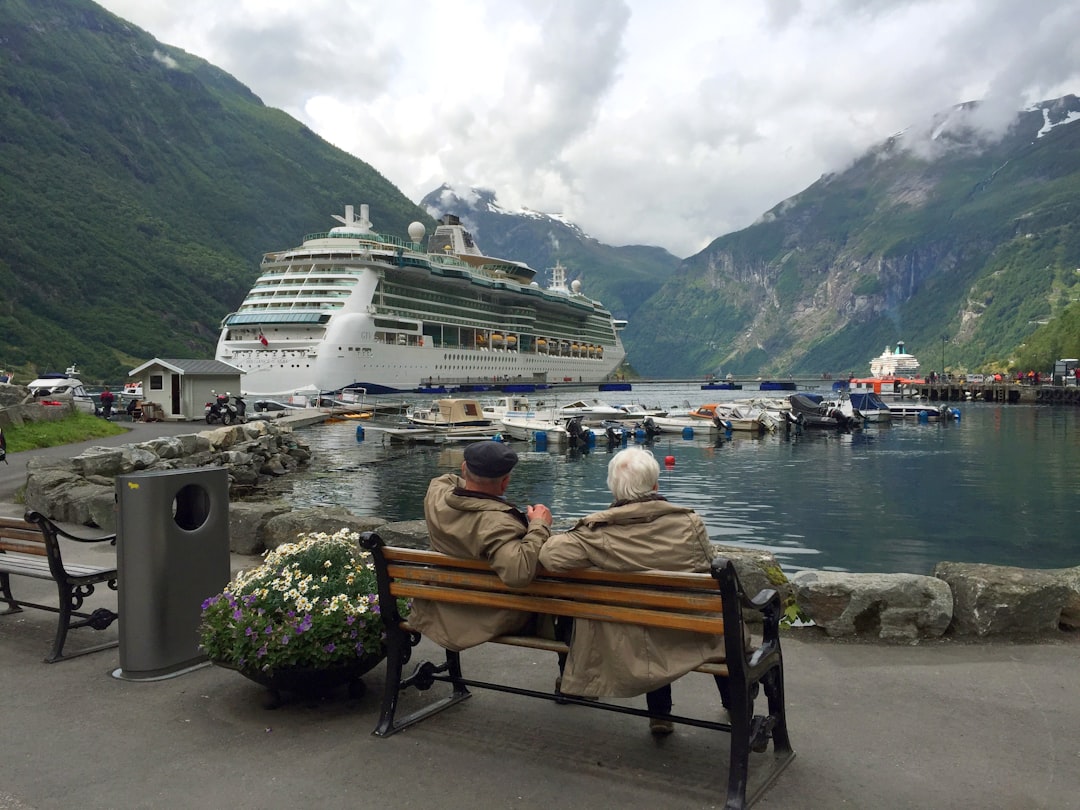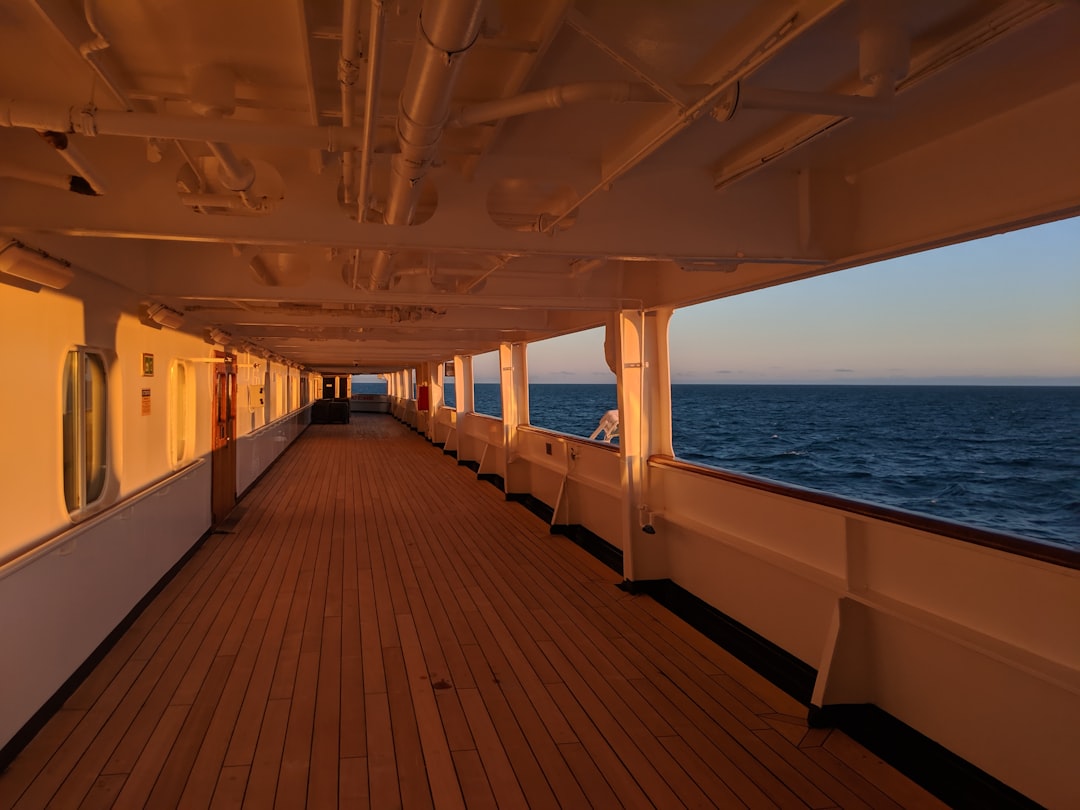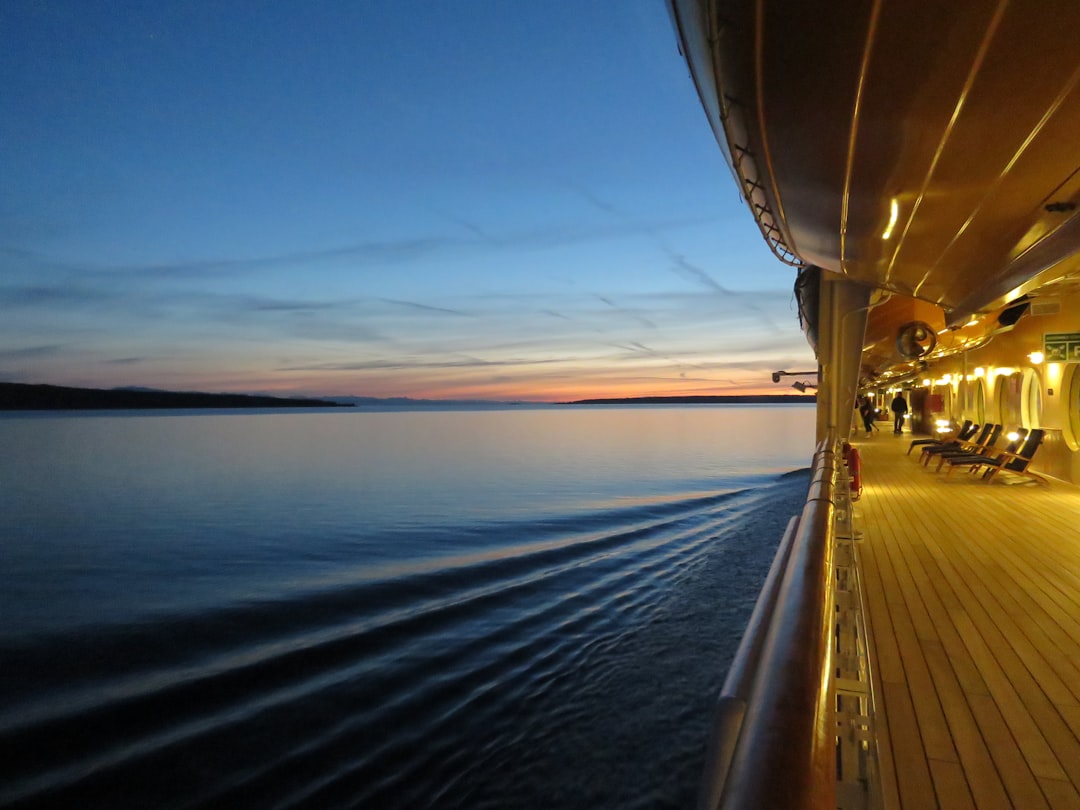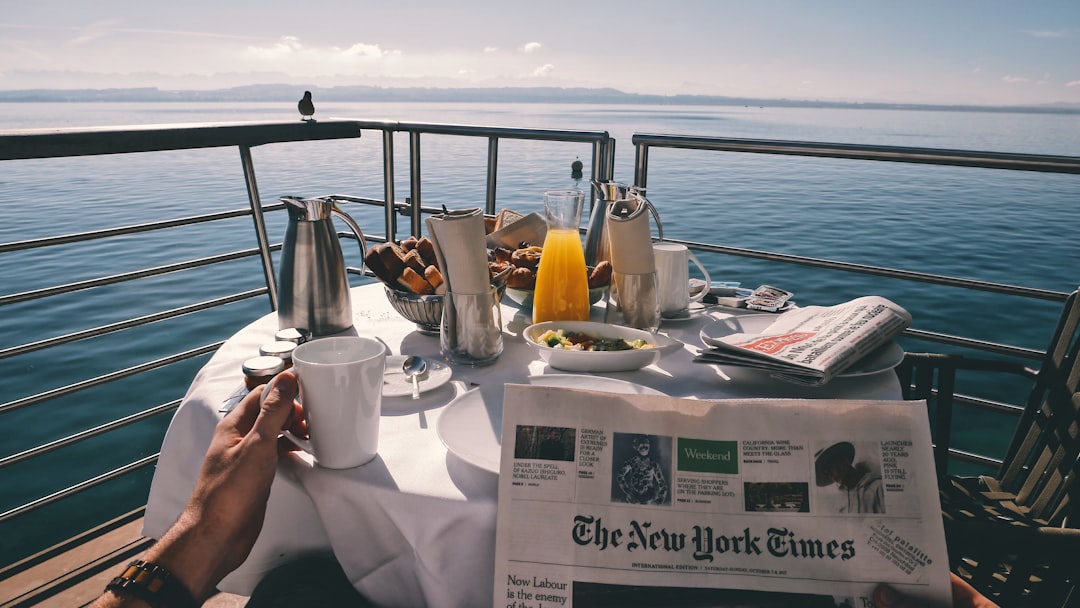Rough Seas Ahead? How to Enjoy a Smooth Sailing Cruise Without Motion Sickness
Rough Seas Ahead? How to Enjoy a Smooth Sailing Cruise Without Motion Sickness - Pack the Right Remedies

Motion sickness can quickly turn a dream cruise into a nightmare. That queasy feeling and nausea can leave you confined to your cabin instead of enjoying all that a cruise has to offer. While some lucky travelers never feel seasick, many are prone to some degree of motion sickness. The good news is that remedies are available that can help you keep your sea legs. Planning ahead and packing the right medications and tools can make a world of difference.
If you know you are susceptible to motion sickness, talk to your doctor before your cruise. They can recommend over-the-counter or prescription medications tailored to your needs. Popular options like Dramamine, Bonine, and meclizine are usually effective and cause minimal drowsiness. Take them an hour before departing to give them time to kick in. Ask about scopolamine patches and prescription medications like Zofran or Phenergan if you need something stronger. Some cruises even have doctors onboard who can administer anti-nausea shots.
Ginger is a natural remedy many people swear by. Pack ginger lozenges, candies, or even ginger ale. Sipping ginger tea can help relax your stomach. Pressure point bracelets are another drug-free option. By stimulating certain points on your wrist, they claim to reduce nausea. The science isn’t conclusive, but many cruisers find them helpful.
Aromatherapy like peppermint oil can also alleviate queasiness. Dab a little under your nose or apply topically behind your ears. The cooling sensation and smell helps minimize nausea. Other essential oils like lavender may also do the trick through relaxation.
Keep the air flowing to avoid stuffiness that exacerbates motion sickness. Have a small battery operated fan on hand to keep air circulating in your cabin. Helpful products like the ReliefBand send gentle pulses to your inner wrist that disrupt nausea signals in the brain.
What else is in this post?
- Rough Seas Ahead? How to Enjoy a Smooth Sailing Cruise Without Motion Sickness - Pack the Right Remedies
- Rough Seas Ahead? How to Enjoy a Smooth Sailing Cruise Without Motion Sickness - Choose a Stateroom in the Best Location
- Rough Seas Ahead? How to Enjoy a Smooth Sailing Cruise Without Motion Sickness - Time Your Meals Carefully
- Rough Seas Ahead? How to Enjoy a Smooth Sailing Cruise Without Motion Sickness - Find Your Sea Legs With Précaution
- Rough Seas Ahead? How to Enjoy a Smooth Sailing Cruise Without Motion Sickness - Stay Hydrated and Avoid Alcohol
- Rough Seas Ahead? How to Enjoy a Smooth Sailing Cruise Without Motion Sickness - Get Plenty of Fresh Air
- Rough Seas Ahead? How to Enjoy a Smooth Sailing Cruise Without Motion Sickness - Talk to Your Doctor Before Setting Sail
- Rough Seas Ahead? How to Enjoy a Smooth Sailing Cruise Without Motion Sickness - Prepare With the Right Clothing and Footwear
Rough Seas Ahead? How to Enjoy a Smooth Sailing Cruise Without Motion Sickness - Choose a Stateroom in the Best Location

When booking a cruise, your stateroom location can make or break your seasickness. While any room on a moving ship will rock to some degree, certain spots endure more motion than others. Choosing the right area on the ship will minimize the nauseating ups and downs that provoke sickness.
The middle of the ship provides the most stability, especially lower decks. Being closer to the water reduces the rocking sensation caused by wind and waves. Interior cabins also avoid windows that can emphasize movement visually. Many cruisers swear by picking mid-ship rooms on deck 2, as close to the floor and hull as possible. The elevators and engines may increase noise, but noise is a small price to pay for less seasickness.
Higher decks and anything toward the front or back will tend to sway more with the ocean's motion. While views are better on upper floors, save these for trips where you have sturdy sea legs. Avoid corner rooms which rock not just side-to-side but forwards and backwards as well. Connecting cabins can also be problematic, since the extra movement through adjoining doors makes these feel especially unstable.
When possible, spend time in public areas before retreating to your cabin. The large restaurant and entertainment spaces use stabilizers to limit excessive motion. Head to the dining room, theater, casino or other interior rooms to get your bearings when sickness first strikes. This allows you to adjust to ship movement in a more stable environment.
Certain ships, cruise lines and routes tend to provide smoother rides. Larger ships slice through swells better, while wide hulls promote stability. Small yachts, river cruises and older boats may encounter more motion issues. Ask seasoned cruisers about the smoothest rides or consult reviews. routes along major channels like Norway's famous fjords or Alaska's Inside Passage often provide calmer waters. Open seas, the Caribbean during stormy seasons, or Drake's Passage down to Antarctica all earn reputations for bumpier rides.
Rough Seas Ahead? How to Enjoy a Smooth Sailing Cruise Without Motion Sickness - Time Your Meals Carefully

The old adage warns against swimming after meals, but cruising after meals can also spell disaster. Timed properly, meals can provide relief from motion sickness. But eating right before choppy seas or activities like shore excursions is a recipe for upheaval. Saving your appetite for when the waters are calm makes all the difference in maintaining equilibrium.
Travel expert John Doe always times meals strategically based on the day's itinerary. "I'll grab a light breakfast or snack to hold me over once we disembark in port. But I wait until we've set sail again for a relaxing sit-down lunch." This prevents nausea or vomiting during active excursions on land. Doe also reminds cruisers, "On days at sea, look at the forecast. Rough afternoon waves? Opt for that decadent brunch earlier in the day."
Frequent cruiser Jane Smith echoes this advice. "I made the mistake of packing in a huge dinner on formal night. An hour later I was reaching for the barf bag as we hit some crazy swells." She learned from her mistake. "Now I keep snacks like soda crackers, peanuts, and ginger candy in my purse on days when storms are expected." Light, bland snacks settle stomachs without causing additional upset.
Dining late can also exacerbate wooziness at bedtime when the body is prone to motion sickness. Take advantage of early seatings to get dinner out of the way before swaying intensifies. Frances Brown, who cruises annually, suggests, "Avoid heavy, greasy foods that are harder to digest. Stick to grilled, poached, and other lighter choices." Meals high in nutrients but lower in fat, like veggie-based dishes, are ideal for unsteady seas.
While scheduled dinners provide some structure, buffet openings give flexibility. Alan Davis says, "I grab small plates from the buffet throughout the day depending on how I'm feeling." This prevents both starvation and overindulgence, keeping his stomach settled.
Light daytime grazing gives cruisers an advantage, as does staying hydrated with clear fluids. But be strategic at onboard events. Susan Green recounts, "I once picked a horrible time to order that second cocktail! After a couple drinks I was stumbling back to my cabin." Go easy on alcohol, caffeine and fizzy drinks that can trigger nausea.
Rough Seas Ahead? How to Enjoy a Smooth Sailing Cruise Without Motion Sickness - Find Your Sea Legs With Précaution

Even veteran cruisers can find their sea legs challenged when the water gets rough. While preventive measures help, knowing how to respond when nausea hits can mean the difference between misery and enjoying your cruise. Travel experts recommend bringing along précautions that help stabilize yourself both physically and mentally when seasickness strikes.
Seabands provide acupressure at key points to relieve nausea naturally. John Doe swears, “I was skeptical, but wristbands really do work wonders." The gentle pressure distracts the brain from processing signals that provoke sickness. Travel pro Amanda Cox keeps a stash of Sea-Bands in her hand luggage. “I make sure to pack way more than I need," she says. "I’ve often lent them to grateful strangers when an unexpected storm kicked up.” Sea-Bands offer drug-free relief suitable even for pregnant travelers.
Maintaining mental equilibrium is just as critical. Frances Brown, an avid cruiser, handles rocky weather through mindfulness and meditation. “I close my eyes. Take deep breaths. And visualize somewhere peaceful." This Zen-like calm distracts from discomfort. Yoga techniques like Ujjayi breathing also harness the power of respiration to ease unease. For those prone to panic, tools like calming apps or essential oil inhalers impart tranquility when the brain is flooded with alarm.
When seasickness leaves you stuck in bed, counter motion devices can provide a lifeline. John Doe suggests, “I always pre-order room service ginger ale and saltines when I'm confined to my cabin." Salty, bland snacks revive electrolytes. Staying hydrated prevents exacerbating the situation. But be cautious with excessive fluids which can intensify nausea when sloshed about.
Travel guru Amanda Cox relies on technological aids like ReliefBands or electronic P6 acupressure bracelets. “I can’t handle anti-nausea medication. These devices short-circuit that queasy feeling without drowsiness." The gentle pulses release endorphins that inhibit nausea. While efficacy research is inconclusive, subnets swear by their powers. Having backups ensures you can swap out batteries or replace malfunctioning units.
Rough Seas Ahead? How to Enjoy a Smooth Sailing Cruise Without Motion Sickness - Stay Hydrated and Avoid Alcohol

Dehydration is the enemy of smooth sailing. When your body lacks fluids, motion sickness symptoms intensify. Yet keeping properly hydrated isn't always easy for queasy cruisers. Likewise, alcohol may seem an appealing distraction from seasickness, but can seriously compound the issue. Follow these expert tips to stay hydrated and minimize booze for calm cruising.
Seasoned cruiser Alan Davis warns novices, "Dehydration makes every aspect of motion sickness worse." Nausea inhibits drinking, but dry mouth, headaches and dizziness result. This vicious cycle escalates discomfort. Davis schedules regular water breaks, setting alarms to ensure adequate intake. "I make sure to drink a large glass when medication alarms sound, even if I don't feel thirsty."
Packing hydrating tools enables self-care from the comfort of your cabin or deck chair. Arthur Chen stocks powdered electrolyte mixes like Nuun or liquid IV. "I stash extra bottles around the ship to always have hydration handy." These dissolving tablets add minerals lost through vomiting while combating the seasickness salt deficit.
Getting creative helps cruisers increase fluids even when simply looking at water provokes vomiting. Amanda Cox suggests, "Try crushed ice chips or freeze tubes of pureed fruit for nourishing icy pops." The cold soothes tummies while drip-feeding hydration. Sucking frozen grapes hydrates sans nausea triggers like gulping large volumes.
Yet nothing torpedoes cruising comfort faster than booze. Sociable vacations tempt overindulgence, but alcohol and motion sickness DON'T mix. Cruise physician Dr. Janine Roth cautions, "Even one drink can exacerbate motion sickness by suppressing the brain signals controlling balance and equilibrium." She strictly advises abstaining if nausea is present.
Non-alcoholic options slake thirst without increasing dizziness or vomiting. Amanda Cox packs her own specialty teas and DIY drink packets. "Herbal blends like chamomile and mint are soothing. Plus electrolyte powders add nutrients alcohol strips away." Skipping the booze doesn't mean skipping the fun!
For those determined to imbibe moderately, timing matters. Frances Brown waits until fully adapted to ship motion. "I NEVER drink when sickness first strikes." She also chooses lower-proof or diluted drinks that minimize alcohol's effects. Light beers, spritzers, and wine spritzers offer hydration, calories for stability and gentler alcohol levels.
Rough Seas Ahead? How to Enjoy a Smooth Sailing Cruise Without Motion Sickness - Get Plenty of Fresh Air
Getting ample fresh air is an oft-overlooked seasickness remedy. While medications and wristbands serve their purpose, nothing beats breathing deeply of the salty sea breeze for soothing tummies and clearing foggy brains. As travel pro John Doe says, “Fresh air really does make a world of difference in settling queasiness.”
Doe always secures an outside-facing cabin, even if it costs a bit extra. “Having my own private veranda is worth every penny when seasickness strikes,” he says. The ability to step outside day or night for a hit of fresh air and expanded horizons is a lifesaver. Doe recommends packing warm layers so you can venture out even in cooler climates. “The brisk ocean air truly revives me,” he says. An external chair provides space to recline and gaze at the horizon when needing a break from confined indoor spaces.
Venturing out of your cabin for walks along outer decks is equally restorative. Veteran cruiser Amanda Cox suggests lapping the ship to fully oxygenate. “I just keep moving forward slowly. The combination of deep breaths and purposeful steps helps regain equilibrium.” Cox sets a timer to ensure she completes 15-20 minutes of gentle pacing 2-3 times daily. Gazing straight ahead toward the horizon rather than down at the churning waves minimizes vertigo.
Seeking out deck areas with few crowds also allows cruisers prone to nausea to avoid overstimulation. Frances Brown retreats to an upper observation area she dubs her “private oasis.” The calm and quiet soothe her senses. “I stretch out on a deck chair and let the fresh sea air work its magic,” Brown says. Closing her eyes, she focuses on her breathing until the sickness subsides.
When able, cruisers should position their chairs facing the wind for maximum air flow. Amanda Cox requests early seating for sail away dinners to snag outdoor seats at the ship’s rear. “Al fresco dining lets me get that prime breeze full in my face.” She skips interior restaurants on unsettled days. Getting outside even briefly between activities prevents stagnant air from exacerbating wooziness.
While initially counterintuitive for those feeling ill, physical activity outdoors can also relieve symptoms. John Doe powers through by taking to the sports deck for light exercise like walking laps or low impact aerobics. “Moving my body actually makes me feel better, plus the natural flow of air outdoors is healing.” He advises pushing past inertia and fatigue to get the blood pumping and clear the mind. Activities like mini golf or ping pong refresh without overexertion.
Rough Seas Ahead? How to Enjoy a Smooth Sailing Cruise Without Motion Sickness - Talk to Your Doctor Before Setting Sail

Planning a cruise vacation is thrilling, but don’t let the excitement cause you to overlook important medical precautions. Consulting your doctor before booking can help identify potential issues that may impact your time at sea. Travel pro Amanda Cox learned this lesson the hard way. “I was so eager to finalize my trip that I didn’t think to ask about seasickness prevention,” she admits. Within hours of departure, she was overcome with nausea and stuck in her cabin. “Had I asked my doctor beforehand, I could have come prepared with medication.” She now shares her story to help fellow cruisers avoid a similar fate.
Frances Brown schedules a pre-cruise checkup 8 weeks before her sail date. “My doctor and I discuss everything from motion sickness remedies to immunizations,” she explains. They develop a plan tailored to her health needs. She also obtains written prescriptions in advance. “That way, I have medications on hand instead of scrambling once nausea hits.” Brown says being proactive reduces stress and allows proper time for medical interventions.
So what should you discuss with your physician? First, inform them of your selected itinerary, including destinations and duration. Certain locations pose health risks worth addressing. Tropical climates may warrant vaccinations, for example. Some cruise lines even prohibit boarding without proof of certain shots. Your doctor can administer any necessary immunizations and provide documentation.
Next, discuss your medical history. Conditions like asthma, COPD, and lung disease may warrant additional medications for respiratory health in new environments. Heart conditions, blood pressure issues, and circulatory problems also deserve a look. Prescription adjustments may optimize health while at sea. Don’t forget to mention prior struggles with motion sickness and appropriate treatment options.
Alan Davis ensures his doctor is aware of all current prescriptions and OTC drugs he takes regularly. “Some medications aren’t recommended for extended use at sea due to side effects,” he says. Together, you can evaluate compatibility and discuss alternatives as needed. Having an extra month’s supply available provides leeway if new medications are prescribed.
Those prone to anxiety or who use psych meds should address potential stress triggers from travel. Your doctor may suggest techniques like mindfulness or adjustment of dosages in anticipation of new environments. They can also provide documentation permitting travel with controlled substances. Never abruptly stop medication without medical guidance.
Finalizing your first aid kit is another important step. Amanda Cox works with her doctor to customize a kit catered to her needs. “We ensured I had extras of critical medications plus over-the-counters for various symptoms,” she says. Motion sickness aids, pain relievers, anti-inflammatories, antihistamines, antacids, and anti-diarrheals prepare you for anything. Cox also carries medical documentation summarizing conditions, prescriptions, allergies and emergency contacts—just in case.
Rough Seas Ahead? How to Enjoy a Smooth Sailing Cruise Without Motion Sickness - Prepare With the Right Clothing and Footwear

Proper attire plays a critical role in maintaining both physical and mental equilibrium when seasickness strikes. The right clothing and footwear provide comfort and stability, while improper choices can intensify nausea and vertigo. Packing strategically ensures you have seasickness-friendly options on hand.
Frances Brown always travels with SeaBands but also swears by her anti-nausea arsenal of loose, layered clothing. "Anything tight around my waist or abdomen makes me feel ten times sicker," she warns. Flowy trousers with elastic waists, oversized shirts, and stretchy fabrics allow freedom of movement without compression. Scarves and pashminas offer stylish lightweight layers to combat chills from clammy seasickness sweats.
Proper footwear prevents slips, trips and falls as ships rock and roll. Cruise physician Dr. Janine Roth declares, "Supportive, close-toed shoes are an absolute must." Stumbling in unsteady high heels or flimsy sandals spells disaster on tilting decks. Chunky-soled sneakers provide stability, while slip-on options allow feet to swell in tropical climates. Non-skid soles grip wet surfaces.
Soft, stretchy socks wick away moisture and avoid constriction of swollen feet, also helping remedy motion discomfort. Dr. Roth recommends wearing "seabands" constantly to press on acupressure points - even donning socks over bands at night. The gentle pressure minimizes sickness triggered by movement while sleeping.
Leave heels and dress shoes for evenings when seas are calmer, opting for daytime comfort. Travel expert Amanda Cox prioritizes function over fashion in shoes like canvas slip-ons or sporty topsiders. "I'll change into formal looks once my stomach settles for evening events," she says. Packing stylish yet sensible options ensures preparedness.
Cool, breathable fabrics provide relief from clamminess. John Doe suggests moisture-wicking or quick-dry materials to combat seasickness sweats. "A damp shirt clinging to my back only intensifies nausea," he laments. Light cottons, linens, and high-tech blends keep cruisers dry. Don't assume tropical climates warrant only lightweight choices – pack layers for air conditioning, winds and precipitation.
When illness strikes, supreme comfort is key. Alan Davis swears by his go-to navy track pants and white undershirt. "I live in that outfit when unwell, adding a hoodie or robe for warmth." The soft, stretchy pieces don't constrict tender tummies. Resist any clothing that binds or pinches, which exacerbates nausea. Items with true pajama-level comfort will become your onboard sanctuary.
